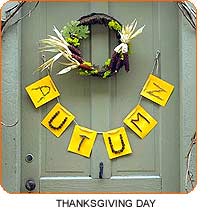Friday, November 30, 2007
Better...
Deliver me from writers who say the way they live doesn't matter. I'm not sure a bad person can write a good book, If art doesn't make us better, then what on earth is it for.
~~Alice Walker
Thursday, November 29, 2007
Thursday's Tip...Writing the perfect scene by Randy Ingermanson
Writing the Perfect Scene
Having trouble making the scenes in your novel work their magic? In this article, I'll show you how to write the "perfect" scene.
Maybe you think it's impossible to write the perfect scene. After all, who can choose every word perfectly, every thought, every sentence, every paragraph? What does perfection mean, anyway?
Honestly, I don't know. Perfection is in the eye of the beholder. Style is a matter of taste.
But structure is pretty well understood. Maybe you can't write the perfectly styled scene. But you can write the perfectly structured scene. And that's a whale of a lot better than writing a badly structured scene.
A scene has two levels of structure, and only two. They are:
The large-scale structure of the scene
The small-scale structure of the scene
Also, check out Randy's blog for interviews with Jeff Gerke who is launching his own Publishing House! Cool.
Also, stay tuned...I'm being interviewed by Randy in a few weeks.
Wednesday, November 28, 2007
Tuesday, November 27, 2007
Manufacturing art
~~Willa Cather
Monday, November 26, 2007
Some scribes you should know...
African American :
Inspirational Romance: Marilynn Griffith
Inspirational Women's Fiction:Stacy Hawkins Adams
Inspirational Contemporary Fiction:Victoria Christopher Murray
Inspirational Urban Fiction: Michelle McKinney Hammond
Inspirational Break Out Author of the Year: Sherri L. Lewis
Mainstream*:
Inspirational Historical Romance: Tricia Goyer
Inspirational MultiCultural Fiction: Marilynn Griffith
Inspirational Suspense: Brandilyn Collins
Inspirational Science Fiction: Donita K. Paul
Inspirational Young Adult Fiction: Melody Carlson
Wednesday, November 21, 2007
A Little Thanksgiving Trivia!

Thanksgiving:
1623–July 30, Governor Bradford ordered a day of prayer for their withering harvest. Rain soon fell and the crops were saved.
1777—General George Washington proposed a national holiday that would combine harvest home with a more formal day of giving thanks.
1789—The year of his inauguration, President Washington issued the first national Thanksgiving proclamation—but it lacked popular support.
1798—President John Adams designated May 9, 1798 as a time for “solemn humiliation, fasting and prayer.”
1815—President James Madison restored the observance of Thanksgiving on April 13.
1827–Mrs. Sarah Josepha Hale begins petitioning presidents and government officials to make Thanksgiving Day a national holiday.
1861–First Pilgrim celebration
1863–President Lincoln issued two Thanksgiving proclamations—August 6 & the last Thursday of November.
1864--Thanksgiving has been celebrated on the last Thursday of November since this time.
1941–In December, a Congressional Joint Resolution specified that the holiday be permanently set on the fourth Thursday in November.
Tuesday, November 20, 2007
Lynne Thompson's Writer's Corner
Magazine Writing Q & A
(Answers to my most asked questions)
Question: Should I send an e-query or send my query letter in the mail?
Answer: Personally I love e-query. No envelopes or stamps to mess with and usually a quicker reply. You need to check though with the market guide to see if the publisher accepts e-queries. Most do, but there are a few who hang to the old tried and true through sleet and snow group.
Question: Do I have to send in the entire article or is a query enough?
Answer: Well, the answer is both. You need to send the query to get the assignment. If you are a beginning writer, or new to that particular magazine, they may want to see the entire manuscript first. This is called “on spec” and means you may do all the work and they will still reject you without pay, but if they like your style they will probably use you again. It's a way to get “in the door.”
Question: Can you send the same query letter to different magazines at the same time?
Answer: Yes, but...
First, be sure and tell them in the query that you are sending this as a simultaneous submission (you don't need to list to whom). Second, I'm hoping that your query isn't a “shotgun” letter ie. sending the exact letter to everyone. Each query should reflect the individual voice and needs of that particular magazine.
Question: When can I send my published article in to another magazine?
Answer: That depends. First, it depends on the kind of rights the first magazine purchased. If they purchased “All Rights” then you can't sell the article again. It belongs to them forever. Personally, I don’t sell “All Rights.” If you sold “First Rights” which is what I sell, then you need to refer to your contract or writer's guidelines. Most magazines secure their right to that article for 60 days after it runs in their publication. Be sure and check before trying to sell the article again, called “Reprint Rights.”
Question: How many rejection letters did you get before you finally sold an article?
Answer: This is a dangerous question. If I said 20, and you've received 21 rejection notices, does that mean you're going to quit writing? The reality is, God is looking for obedience. So if you've received 100 rejections, and He says keep going, then that is your answer. I would suggest, however, that you keep working to improve your craft.


